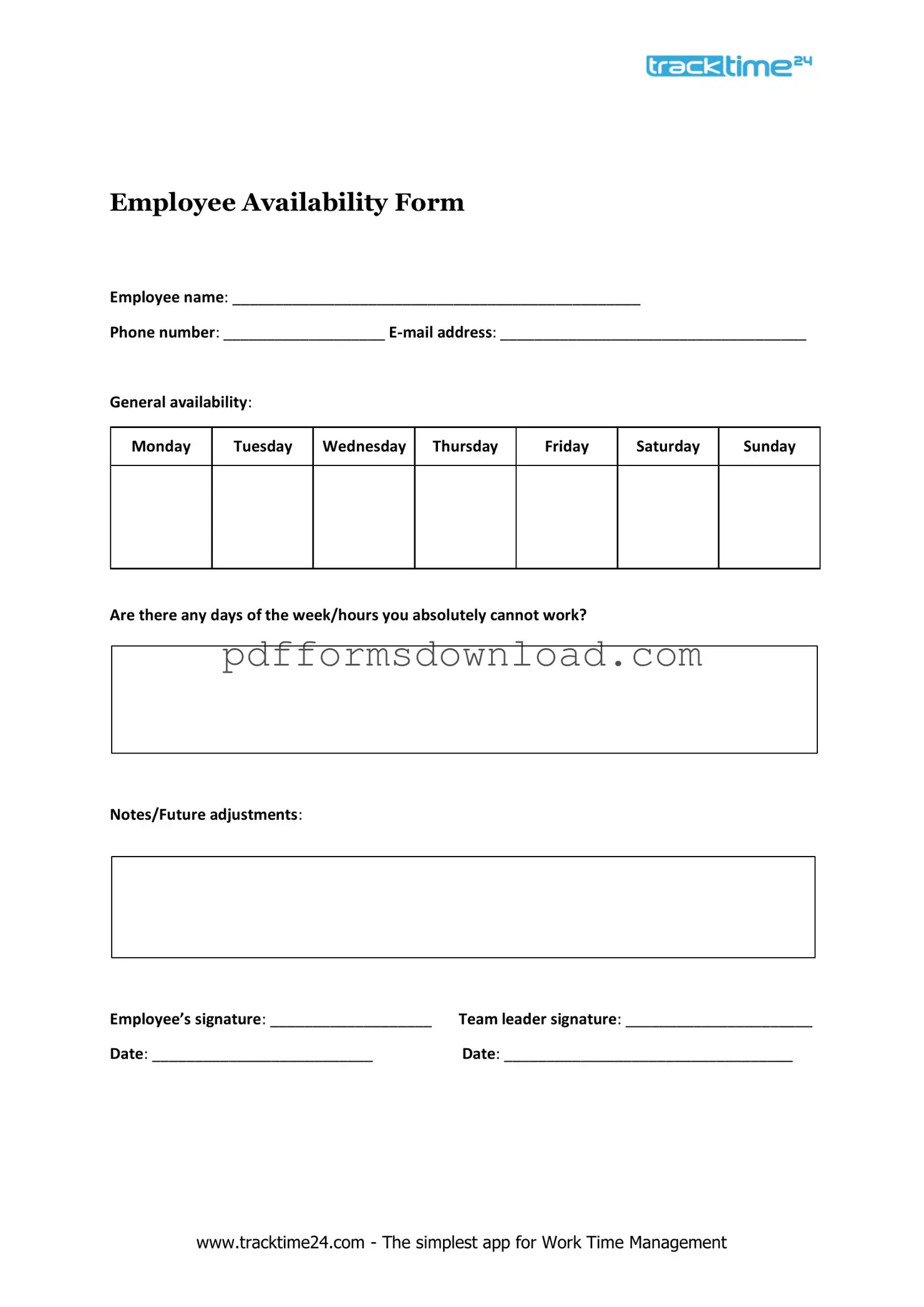What is the Employee Availability form?
The Employee Availability form is a tool used by employers to gather information about when employees are available to work. This form helps managers schedule shifts effectively and ensures that staffing needs are met while considering employees' personal commitments.
Why is it important to fill out the Employee Availability form?
Completing the Employee Availability form is crucial for both employees and employers. For employees, it allows them to communicate their preferred working hours and any constraints they may have. For employers, it provides insights into staffing capabilities, enabling better planning and scheduling.
How often should I update my availability?
It is advisable to update your availability whenever there are significant changes in your schedule. This could include new classes, a change in childcare arrangements, or any other commitments that affect your work hours. Keeping this information current helps ensure that your employer can accommodate your needs.
What should I do if I have a special request regarding my availability?
If you have a specific request, such as needing certain days off or preferring to work particular shifts, you should include that information in the Employee Availability form. If the form allows for additional comments, use that space to explain your request clearly. Open communication with your employer is key.
Can I change my availability after submitting the form?
Yes, you can change your availability after submitting the form. It is important to inform your employer as soon as possible about any changes. This allows them to adjust schedules accordingly and maintain smooth operations within the workplace.
What happens if I don't fill out the Employee Availability form?
If you choose not to fill out the Employee Availability form, your employer may not have a clear understanding of your scheduling preferences. This could lead to you being assigned shifts that do not work for you, potentially causing conflicts between your job and personal life.
Is there a deadline for submitting the Employee Availability form?
Deadlines for submitting the Employee Availability form may vary by employer. It is essential to check with your supervisor or HR department for specific timelines. Submitting the form on time helps ensure that your availability is considered during the scheduling process.
Will my availability affect my chances for promotion or shifts?
While availability can play a role in scheduling, it should not directly affect your chances for promotion. However, being flexible and available for various shifts may make you a more attractive candidate for advancement opportunities. Employers often value employees who can adapt to changing needs.
Who has access to my Employee Availability form?
Your Employee Availability form is typically accessible only to your immediate supervisor and the HR department. They use this information to create schedules and manage staffing. It is treated confidentially, and your personal information should not be shared without your consent.
What if I have questions about the form itself?
If you have questions about the Employee Availability form, don’t hesitate to reach out to your supervisor or HR representative. They can provide clarification on how to fill it out, what information is needed, and how it will be used. Open communication is encouraged to ensure you feel comfortable with the process.
